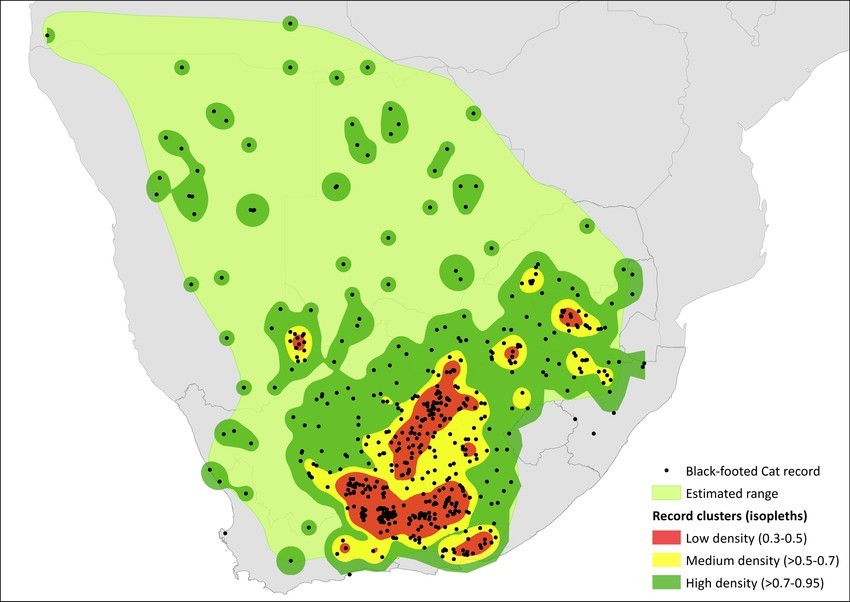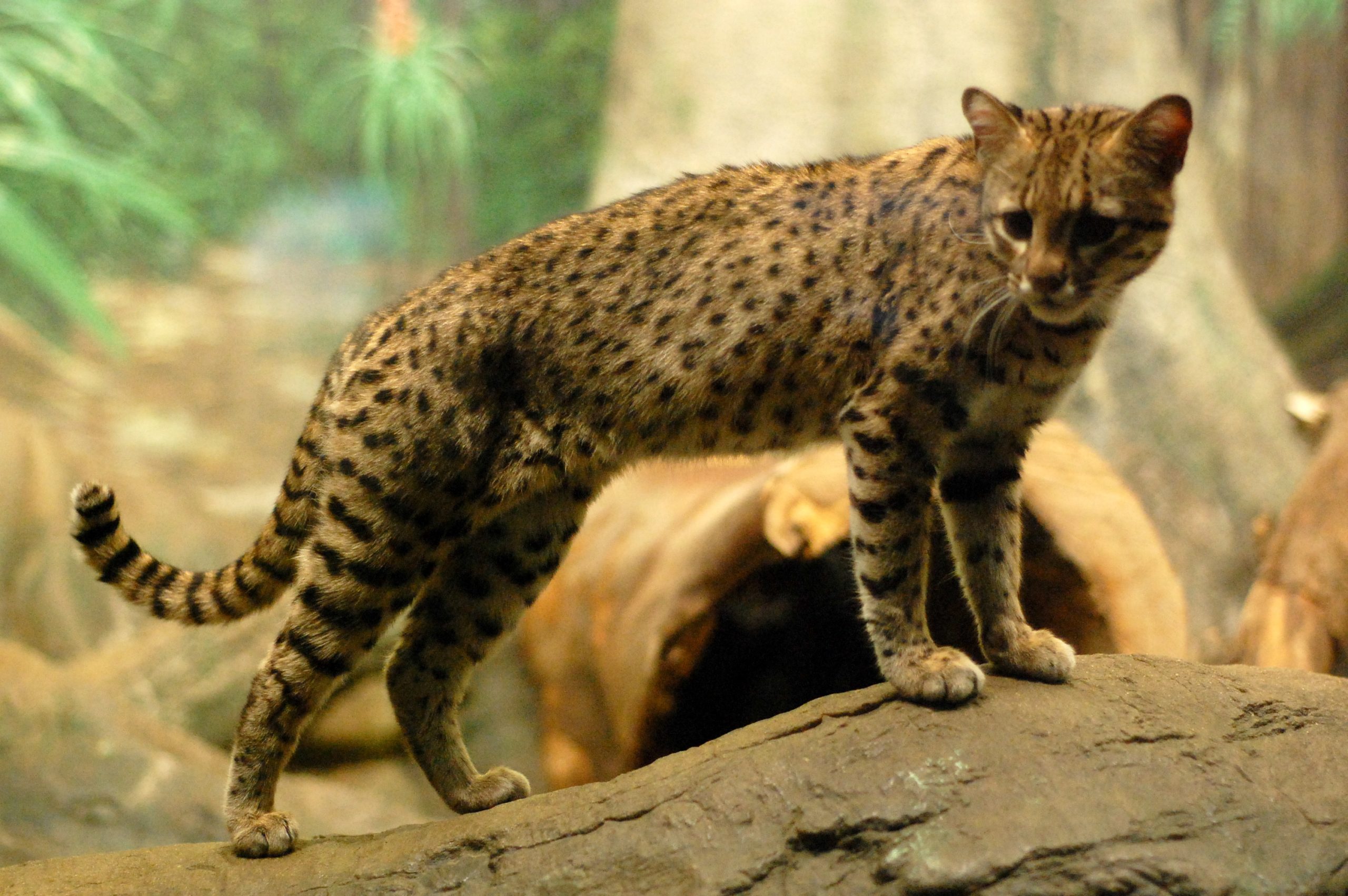
The Geoffrey’s cat is native to the southern and central regions of South America. It is currently considered least concern, and is abundant and common across its range.

Wildlife and conservation new, wild travel information and links for booking
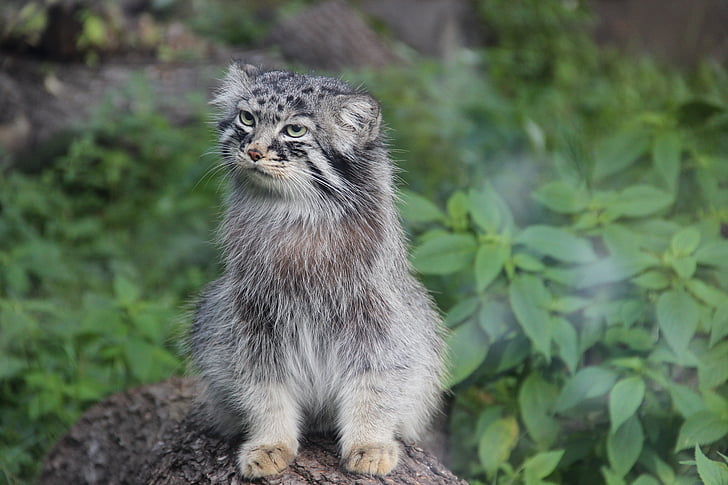
Often referred to as the grumpy cat or in similar way, the Pallas cat occurs in Central Asia, from the Caspian Sea through iran, Afghanistan, Pakistan and northern India to central China, Mongolia and southern Russia. Populations in the southwest portion of their range – the Caspian Sea region, Afghanistan and Pakistan – are diminishing, isolated and scarce.
It size is similar to the domestic cat, and is far less stocky than its thick fur might make people believe.
It specializes in hunting small mammals.
It is considered least concern in terms of conservation, but little is known about its behaviour or situation in much of its range.
a small East Asian wild cat that has a yellowish-brown coat with black spots and often lives near water.
The leopard cat is a small cat, from east asian wild cat has a yellowish-brown spots – often living near water. These cats vary widely across their range. there does appear to be a significant difference between the Leopard cat found on Borneo and Sumatra, and the specimens found on the mainland. so they have been split As a generalisation, however, the Sunda Leopard Cat appears to have smaller dark spots and blotches than its cousin, the Mainland Leopard Cat.
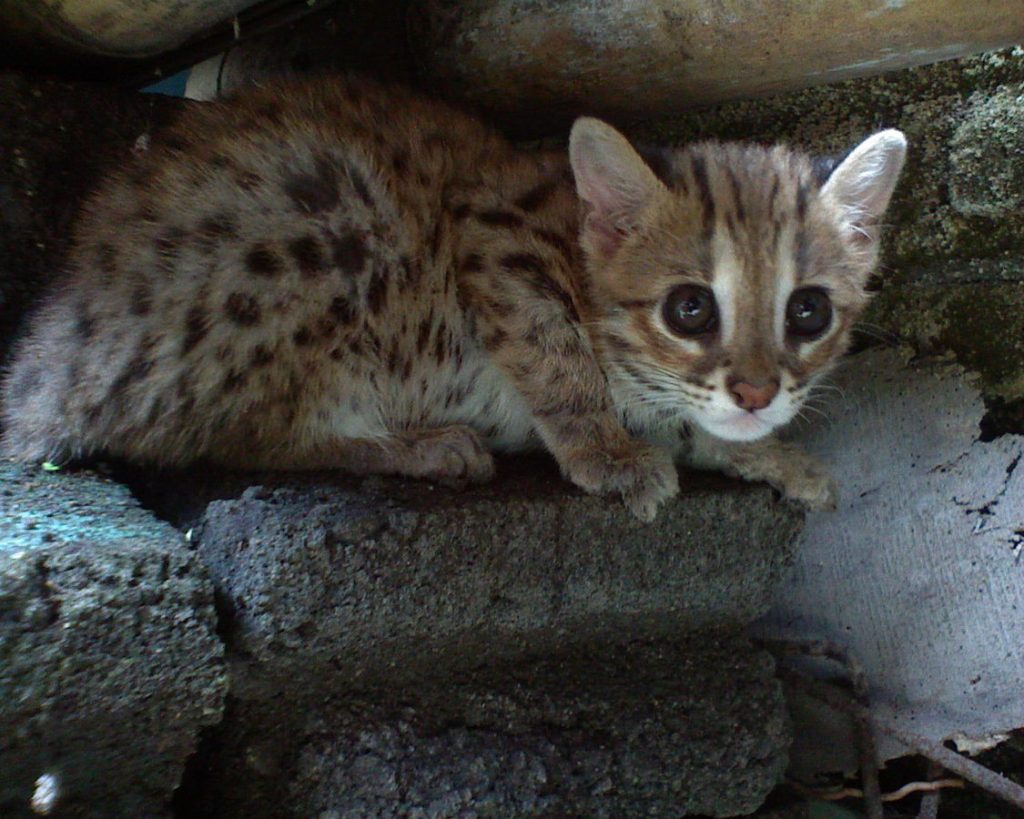
Given this variability, there has also been the suggestion of up to 12 subspecies of the leopard cat. However, more recent analysis suggests a Northern Leopard Cat (amur leopard cat) and a Southern Leopard cat. There is then also the Sunda Leopard cat which is found on Java, Bali, Borneo, Sumatra, Palawan, Negros, Cebu, Panay, and possibly the Malay Peninsular. It was only declared a separate species back in 2017, but there is still much debate on its classification.
Suffice to say, if they are separate species, they are similar enough to be handled as one.

Leopard cats are live alone except during breeding season. While some are active during the day, most hunt at night, preferring to stalk murids, tree shrews and hares. They are effective climbers and quite arboreal in their habits. They will often rest in trees, but also hide in dense thorny undergrowth on the ground.
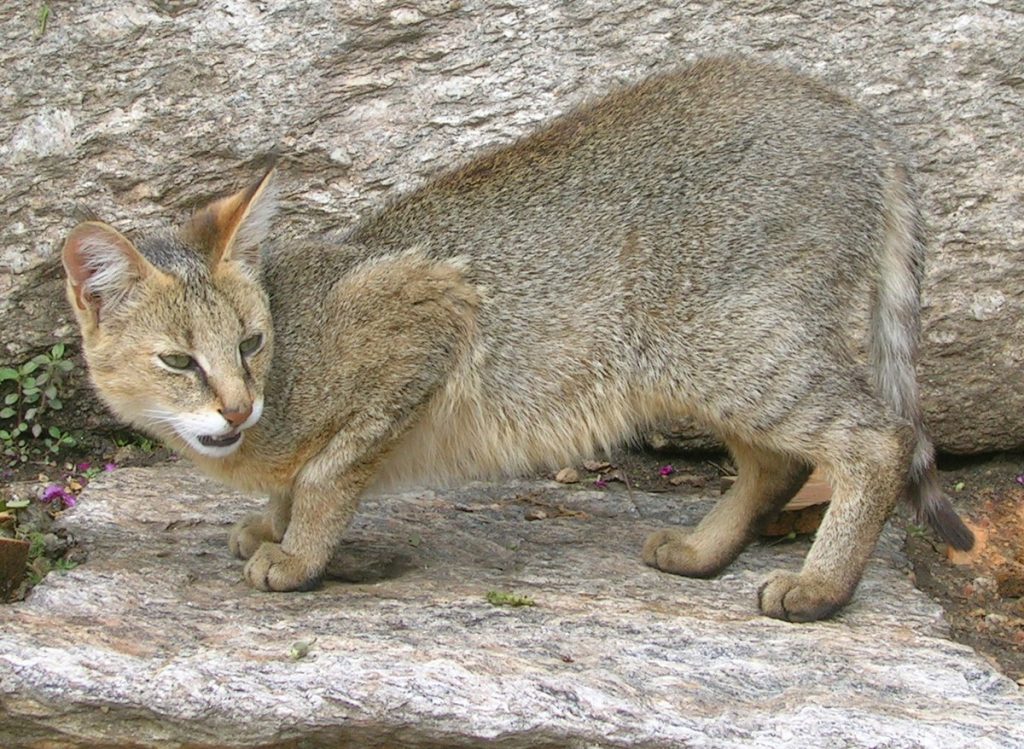
The Jungle cat (Felis chaus) is also known as the reed cat, swamp cat or the Jungle lynx. It is a mid sized cat that coves from the middle east and the Caucasus, along with Southeast Asia and Southern China. It lives in wetlands like swamps and riparian areas with dense vegetable. It is listed as least concern, but threats do include destruction of wetlands trappings and poisonings, which means that this could change fast.
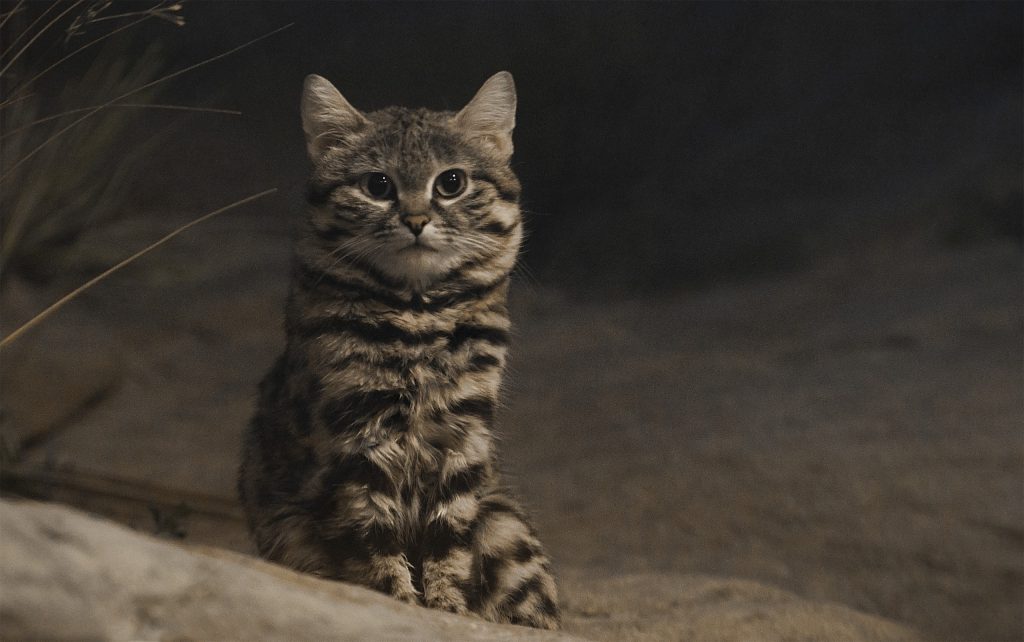
The smallest cat in Africa, the black footed cat is a spotted cat – it is roughly half the size of the domestic cat. They are found throughout southern Africa, but are rarely spotted, partly due to their size, aswell as usually being mistaken for other things.
They exist in well known parks such as the Kruger, but their stronghold is the semi arid region of the Karoo.
